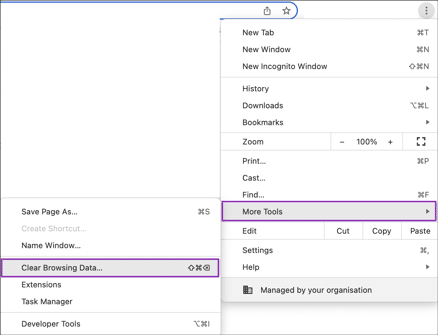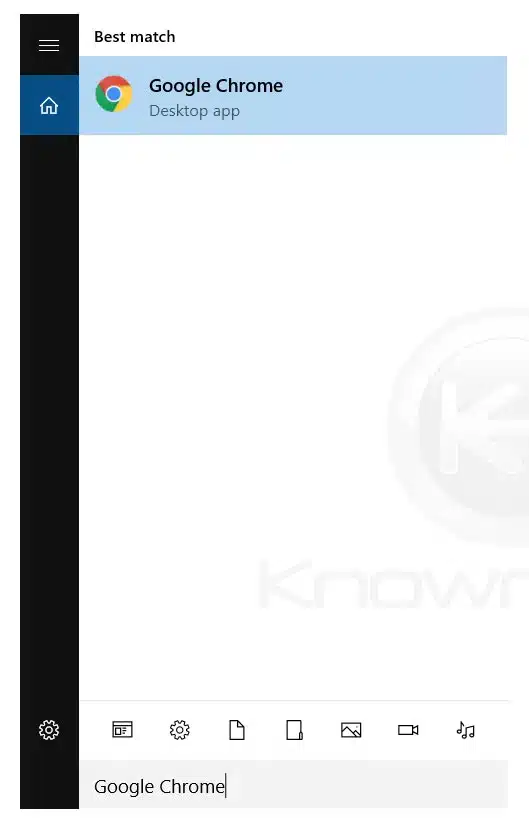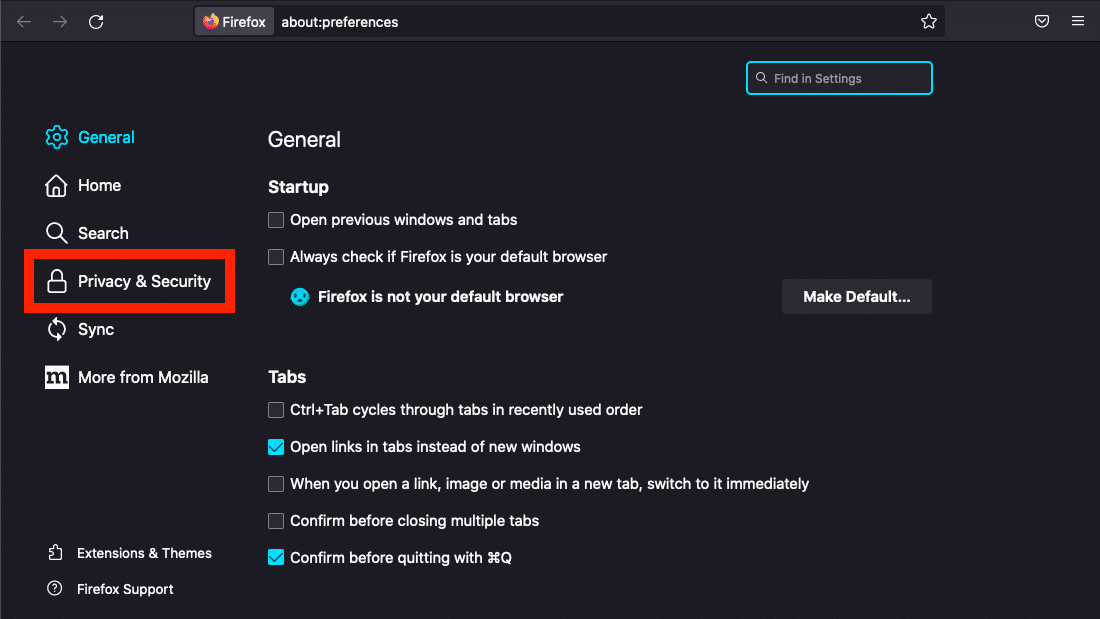|
IN BRIEF
|
Clearing your browser cache is an essential practice for maintaining optimal performance. It not only helps in resolving issues like slow loading websites, but it also aids in protecting your online privacy. When you regularly clear your cache, you remove stored data such as cookies and browsing history, which can clutter your browser and affect its functionality. This guide will provide you with a comprehensive approach to safely clear your browser cache and ensure a smoother browsing experience.
Clearing your browser cache is essential for maintaining optimal performance of your web browser. It helps to remove outdated or corrupted files that may affect your browsing experience. However, it is important to know how to do this safely to avoid losing important data like saved passwords or browsing history. In this article, we’ll discuss the advantages and inconveniences of clearing your browser cache safely.
Advantages
One of the main advantages of clearing your browser cache is the improvement in browser performance. As you browse the internet, your browser saves certain files to speed up load times for frequently visited websites. Over time, this cache can become bloated, making your browser slower. By clearing the cache, you can enhance browsing speed and improve the response time of your browser. For further tips on optimizing browser performance, visit our guide.
Additionally, clearing the cache can resolve webpage display issues. Sometimes, outdated cached data can cause problems when visiting sites that have been updated. By clearing your cache, you ensure you’re viewing the most recent version of a website. This can help in troubleshooting common browser issues quickly, which you can learn more about here.
Inconveniences
While there are clear benefits to clearing your cache, there are also some inconveniences to consider. One of the primary concerns is the potential loss of saved passwords and login information. If you clear your cache without properly managing your saved passwords, you might find yourself locked out of various accounts. It’s advisable to check your password settings before proceeding.
Moreover, clearing your cache can lead to a temporary slowdown in browsing speed as the cache begins to rebuild. This means that upon your next visit to favorite sites, you may experience longer load times initially. For tips on clearing cache safely on different devices, you can refer to this resource.
Lastly, clearing your cache too frequently can disrupt your browsing experience by removing useful data, such as auto-fill suggestions and session data that aids in faster navigation. It is important to balance between clearing the cache and retaining useful browsing information. A discussion about the regular deletion of cache files can be found here.
Clearing your browser cache is essential for maintaining browser performance, ensuring privacy, and resolving various browsing issues. This guide will walk you through safe methods to clear your cache and cookies across different web browsers, allowing for a smoother and safer online experience.
Understanding Browser Cache and Cookies
The browser cache stores temporary files from websites to enhance loading times during repeat visits. While this is convenient, a filled cache can lead to outdated information and errors. Cookies, on the other hand, store your preferences and login information, which can also create privacy concerns if not managed properly.
Using Keyboard Shortcuts
A quick way to access cache clearing options in most browsers is to use keyboard shortcuts. While in your browser, press Ctrl + Shift + Delete simultaneously. This will open a menu where you can choose to clear cache and cookies safely.
Clearing Cache in Google Chrome
To clear your cache in Google Chrome, follow these steps:
- Click the Menu in the upper right corner.
- Select History.
- Click on Clear Browsing Data.
- Select the time range or choose All time to remove everything. For more detailed guidance, refer to the official Google support page.
Clearing Cache in Other Browsers
For Firefox, access the menu, select Options, then Privacy & Security to clear data. In Microsoft Edge, click on the three dots, go to Settings, select Privacy, Search, and Services, and choose Choose what to clear. Guidelines for clearing cache in various browsers can be found on this resource.
What You Lose When Clearing Cache
Clearing your cache may result in lost data such as saved passwords or shopping cart items. However, it is generally safe to clear cache files regularly to improve overall performance. You can read more on the implications of cache clearing on Kaspersky’s guide.
Tips for Enhanced Privacy
Regularly clearing not only your cache but also your cookies can improve your online privacy. Consider using browser extensions to help manage these and regularly assess your privacy settings by visiting privacy enhancement tips.
Improving Performance
For a more fluid browsing experience, consider implementing performance optimization techniques. This includes clearing browsing data, resetting browser settings, and preventing unnecessary site data from accumulating. You can find effective strategies by exploring performance optimization tips.
Troubleshooting Common Issues
If you encounter slow loading websites or frequent browser crashes, check the cache and consider clearing it as a part of your troubleshooting process. For quick resolutions to these issues, refer to this comprehensive guide.

Clearing your browser cache is essential for maintaining optimal performance and ensuring your online security. Over time, cached data can accumulate and slow down your browser, potentially leading to issues like freezes or crashes. Here, we provide you with effective methods to clear your cache safely while keeping your data secure.
Understanding Cache and Cookies
Cache is a collection of data that your browser saves to help load websites faster on subsequent visits. However, when this data becomes outdated, it can cause display issues or loading errors. Similarly, cookies store information about your site preferences. Clearing both can enhance your browsing experience.
Step-by-Step Guide for Chrome Users
To clear your cache and cookies in Google Chrome, follow these steps:
1. Open your Chrome browser and click on the Menu (three dots) in the upper right corner.
2. From the drop-down menu, select History, then click on Clear browsing data.
3. In the new window, choose a time range; setting it to “All time” ensures all data is removed.
4. Check the boxes for Cached images and files and Cookies and other site data.
5. Finally, click Clear data to complete the process. You can follow this comprehensive guide for more detailed instructions.
Using Keyboard Shortcuts for Quick Access
If you’re looking for a quicker way to clear your cache, keyboard shortcuts can be used. Press Ctrl + Shift + Delete while in your browser. This shortcut opens the clearing data interface directly, speeding up the process.
Clearing Cache in Other Browsers
For those using different browsers, similar steps apply:
In Firefox: Click on the Menu (three horizontal lines), choose Library, then History, and finally select Clear Recent History.
For Microsoft Edge: Click on the Menu button, select Settings, go to Privacy, search, and services, and under Clear browsing data, click Choose what to clear.
Maintaining Browser Performance
Regularly clearing your cache helps maintain your browser’s performance. It can also protect your online privacy by removing stored data that could be misused in phishing attacks. Utilize tips from this resource to enhance your browsing safety.
What Happens When You Clear Cache?
When you clear your cache, you may lose saved passwords, shopping cart data, and other site-specific settings. However, this occurs safely.), and you can always log back into your accounts afterward.
Resetting Browser Settings
If you encounter persistent issues, consider resetting your browser settings effectively. Doing this can solve underlying problems caused by incompatible extensions or settings that may have been altered. Check out this guide for thorough instructions.
Safe Methods to Clear Browser Cache
| Browser | Steps to Clear Cache Safely |
| Google Chrome | Press Ctrl + Shift + Delete, choose a time range, and select Cached images and files. |
| Mozilla Firefox | Click on the menu, select Options, go to Privacy & Security, and clear Cached Web Content. |
| Microsoft Edge | Open settings, select Privacy, Search, and Services, and choose Clear Browsing Data. |
| Safari | Go to Preferences, select Privacy, and click on Manage Website Data to remove caches. |
| Opera | Access settings, choose Advanced, go to Privacy & Security, and clear browsing data. |
| Brave | Click on the menu, select Clear Browsing Data, and choose Cached images and files. |
| Internet Explorer | Access Tools, choose Internet Options, and under the General tab, click on Delete. |

Clearing your browser cache is an essential step in maintaining optimal performance and security while browsing the internet. It allows you to remove unwanted temporary data that could slow down your browser or even cause issues with website functionality. Here’s how you can do it safely.
First, it’s important to know that different browsers have various methods to clear the cache. Generally, you can accomplish this by using a simple keyboard shortcut. Just press Ctrl + Shift + Delete on your keyboard while in your browser. This action will open a dialog box where you can choose what data to remove.
In browsers like Google Chrome, you can access the cache clearing feature by clicking on the menu icon located in the upper-right corner. From there, navigate to History, and then select the option for Clear Browsing Data. Choosing a time range is crucial—select All time if you want to remove everything.
For those using Firefox, the steps are similar. After opening the menu, go to Library, then click on History and select Clear Recent History. Ensure that you check the Cache option in the dialog box to ensure it’s included in the deletion process.
It’s also good to be aware of what you may lose when clearing your browser cache. Some saved passwords, shopping cart items, or recently visited sites might be removed, so make sure you have backups or that you don’t need this information before proceeding.
Regularly clearing cache not only frees up space but can also enhance the performance of your browser. It’s a routine that can lead to faster loading times and an overall smoother browsing experience.
Remember, maintaining a clean cache is part of a healthy browsing habit. It helps to keep your online experience running efficiently and reduces the chances of website errors or loading issues. Prioritize your online security and performance with routine cache clearing.
Clearing your browser cache is essential for maintaining optimal performance, ensuring security, and enhancing your online experience. Regularly removing cached data helps resolve issues like slow loading times, outdated content, and privacy concerns. This article provides comprehensive guidance on safely clearing your browser cache while safeguarding your important data.
Understanding Browser Cache
Your web browser stores various types of data, including images, scripts, and other files from websites you visit. This stored information is called cache and is designed to speed up the loading process for frequently visited sites. However, over time, cached data can accumulate, leading to potential issues.
Benefits of Clearing Cache
Clearing your cache regularly can improve your browser’s performance, ensuring that it runs smoothly. It can also resolve issues related to page loading, freeing up space on your device. Additionally, removing old cache files helps prevent security vulnerabilities and enhances your online privacy by removing tracking cookies.
How to Clear Your Browser Cache on Different Browsers
Google Chrome
To clear your cache in Google Chrome, follow these steps:
- Click on the menu icon (three dots) in the top right corner.
- Select History.
- Click on Clear Browsing Data.
- Choose a time range, such as All time, to delete everything.
- Ensure the Cached images and files and Cookies and other site data options are checked.
- Finally, click on Clear Data.
Mozilla Firefox
Here’s how to clear your cache in Mozilla Firefox:
- Click on the menu icon (three horizontal lines) in the upper-right corner.
- Choose Options.
- Select Privacy & Security.
- Scroll down to the Cookies and Site Data section.
- Click on Clear Data.
- Check the boxes for Cached Web Content and Cookies.
- Click Clear.
Microsoft Edge
To clear your cache in Microsoft Edge, follow these steps:
- Click on the menu icon (three dots) in the top-right corner.
- Select Settings.
- Click on Privacy, Search, and Services.
- Under Clear browsing data, click on Choose what to clear.
- Select a time range and ensure you check the Cached images and files and Cookies and other site data options.
- Finally, click on Clear now.
Important Considerations
While clearing your cache is beneficial, be aware that doing so may log you out of websites and remove saved preferences. It’s good practice to take note of your passwords or save them to a password manager before proceeding. Furthermore, consider scheduling regular cache clearing to maintain performance without losing important data frequently.
Final Thoughts
By following the steps outlined in this guide, you can easily clear your browser cache and enhance your browsing experience. Regular maintenance will keep your browser running efficiently and securely.

Clearing your browser cache is an essential maintenance practice that can significantly improve your browsing experience. By regularly removing cached files, you help to ensure that your browser runs smoothly and efficiently. This process not only aids in speeding up page loading times but also helps in resolving common issues such as website glitches and outdated content.
To clear your browser cache safely, it’s important to follow a series of structured steps specific to the browser you are using. Most browsers provide a straightforward way to clear cached data, often found within the settings or tools menu. For instance, in Google Chrome, you would click on the menu in the upper right corner, select History, and then click on Clear browsing data. Make sure to choose the appropriate time range, ideally selecting All time to delete all cached files.
It’s equally important to handle your cookies with care. Cookies store your login information and website preferences, so clearing them may require you to log back into your accounts. However, if you are facing issues such as slow website performance or security threats like phishing, it’s advisable to clear both cache and cookies for enhanced security and efficiency.
Whether you’re using Windows, Mac, or mobile devices, remember to use the designated keyboard shortcuts (like Ctrl + Shift + Delete) to expedite the clearing process. Always take a moment to review what you are deleting, balancing convenience with functionality. This practice not only enhances privacy but also frees up storage space, allowing your browser to operate at its best.
Frequently Asked Questions on How to Clear Your Browser Cache Safely
How do I clear my browser cache? To clear your browser cache, you can use a keyboard shortcut. Press Ctrl + Shift + Delete simultaneously while in your browser, which will open the appropriate settings.
Is it safe to clear my browser cache regularly? Yes, it is generally safe to clear your cache regularly. Doing so can help improve browser performance and security by removing outdated files.
What happens when I clear my cache? When you clear your cache, your browser will remove stored files that help websites load faster. This may temporarily slow down the loading times for frequently visited websites.
Do I lose my saved passwords when I clear my cache? No, clearing your cache does not erase saved passwords. However, it may remove some browsing history and cookies, which might affect auto-fill features.
How often should I clear my cache? It is recommended to clear your cache every few weeks or when you notice performance issues in your browser to maintain optimal functionality.
Can I clear the cache for specific websites? Yes, many browsers allow you to clear cache for specific websites through the browser settings without affecting the entire cache.
Will clearing my cache help with slow loading websites? Yes, clearing your cache can resolve issues with slow loading websites by removing corrupted or outdated files that may be causing the delay.
How do I clear my cache on mobile devices? On mobile devices, you can usually find the option to clear cache in the browser settings under Privacy or Storage.
